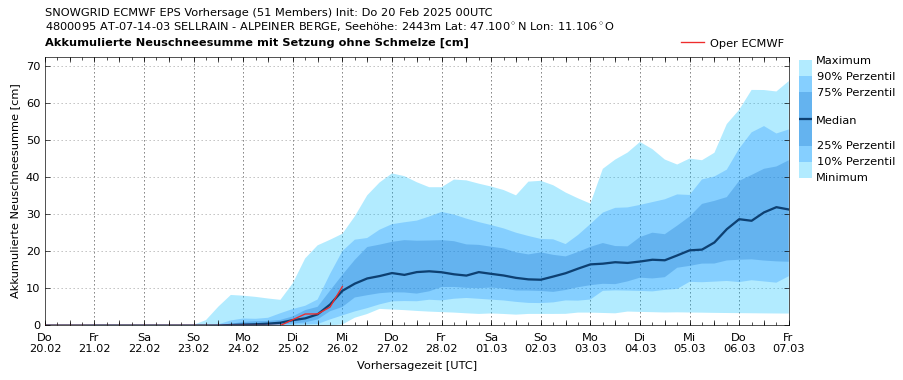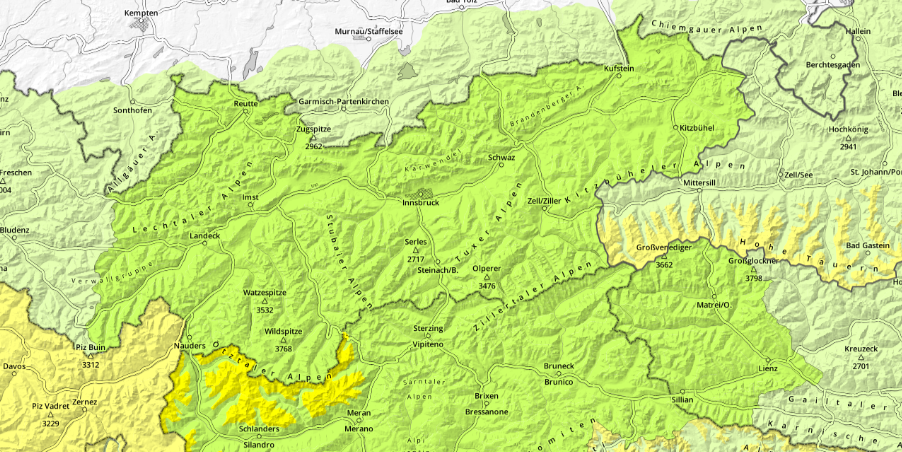For dry slab avalanches only isolated danger zones, esp. on extremely steep shady slopes above 2400m. Due to mild temperatures and solar radiation, likelihood of wet loose-snow slides and glide-snow avalanches to increase somewhat. In general, favorable conditions prevail. Risks of injury from hidden rocks outweigh those of avalanche danger.
Few avalanche prone locations in extremely steep terrain
Impressively stable high-pressure front conditions have caused the small amounts of fresh snow from last week to metamorphose expansively and thus, become increasingly unbonded. Fractures in weak layers can’t propagate, since the requisite slab is lacking. Slab avalanches are thus becoming less and less likely.
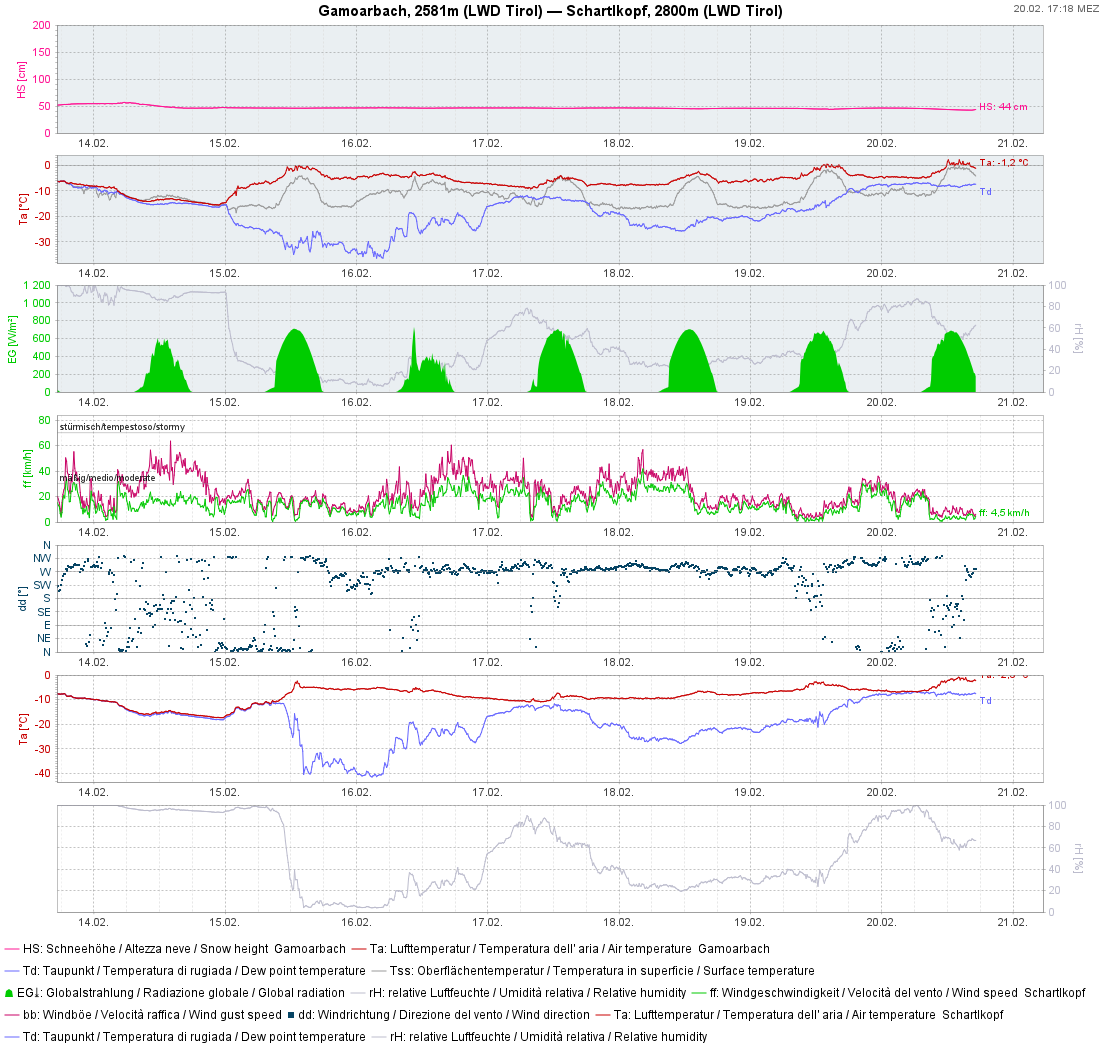
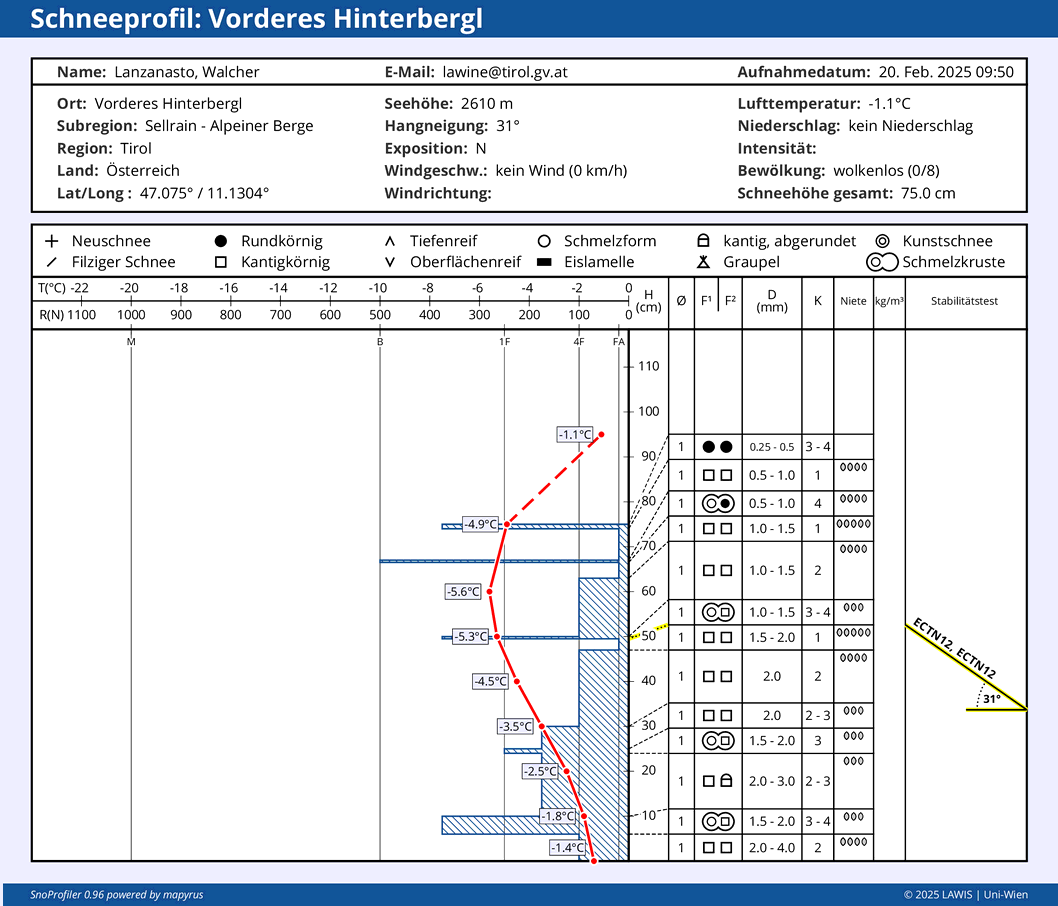
[ Digression: The process of expansive metamorphosis is pronounced during periods of high-pressure fronts because the surface expels its warmth in the form of long-wave outgoing radiation, leading to massive cooling. Whereas when skies are overcast, clouds reflect the long-wave radiation back to earth, restoring surface temperatures, bringing them in line with air temperature. Due to intense cooling of the surface, a stark temperature gradient in the uppermost 10-20cm of the snowpack is generated, leading to intensified expansive metamorphosis and the formation of faceted crystals. ]
Danger zones for dry slab avalanches have become more seldom over the last few days because of this development:
Isolated avalanche prone locations are to be found particularly in extremely steep terrain (>40°) mostly near ridgelines where highly visible, often hardened snowdrift masses can still be triggered as small avalanches. Here is where risks of taking a fall forced by traps in the terrain (e.g. only barely covered rocks) demand high caution.
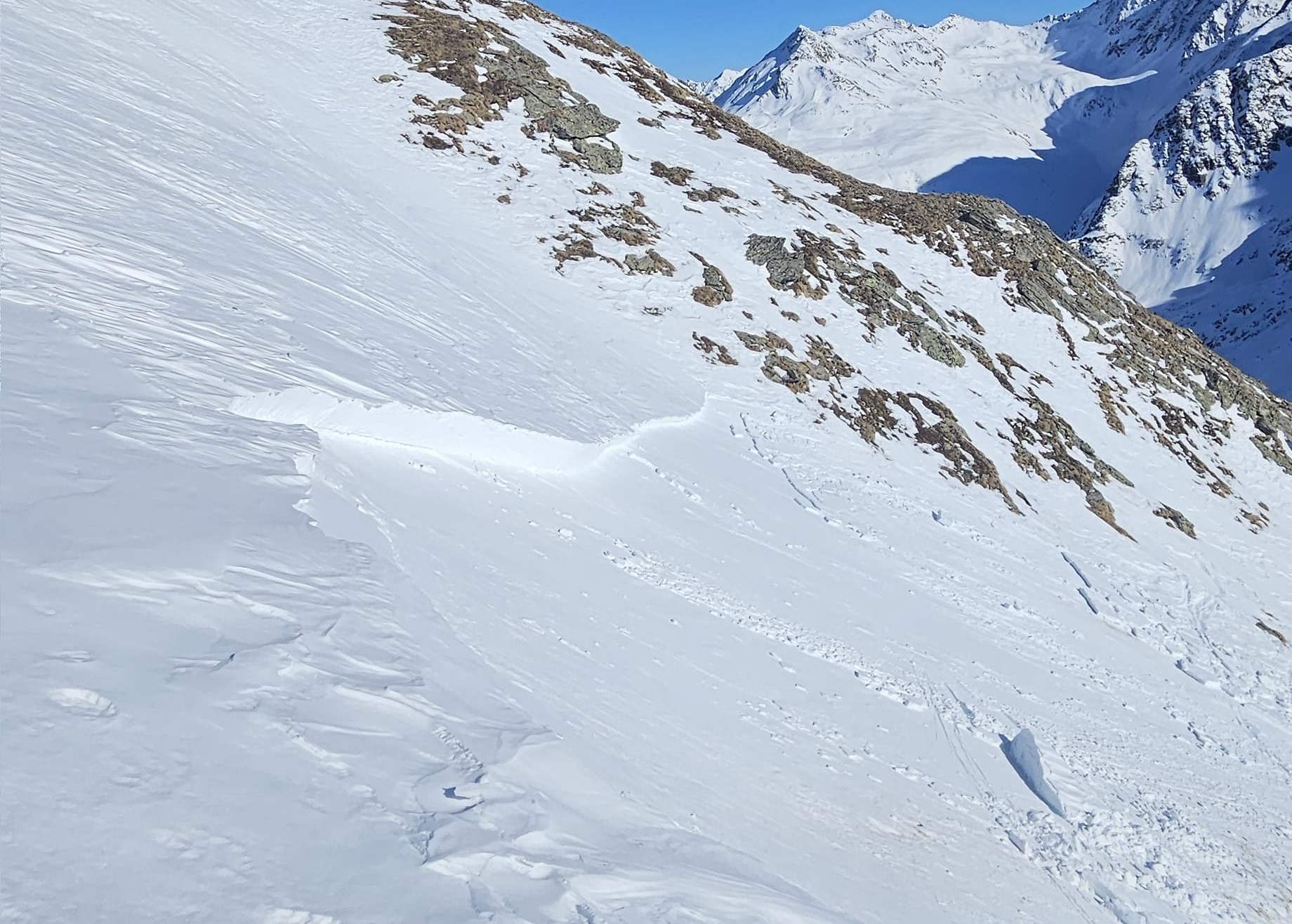
As far as the persistent weak layer problem goes, we haven’t received any reports of further releases since last weekend’s triggerings by persons. Danger zones are probably rare. The highest risks: in ridgeline terrain on extremely steep and little skied-on west/north/east facing slopes above 2400m.
Due to mild temperatures (zero-degree level will rise temporarily to nearly 3000m tomorrow, 21.02) and solar radiation, the snowpack on south-facing slopes will soften and lose its firmness. Thereby, the likelihood of small wet loose-snow avalanches will increase somewhat on extremely steep south-facing slopes. Due to water seepage into the snowpack, gliding snow activity will also increase on steep grass-covered slopes, particularly in northwestern regions of Tirol. Zones below glide cracks should be avoided.
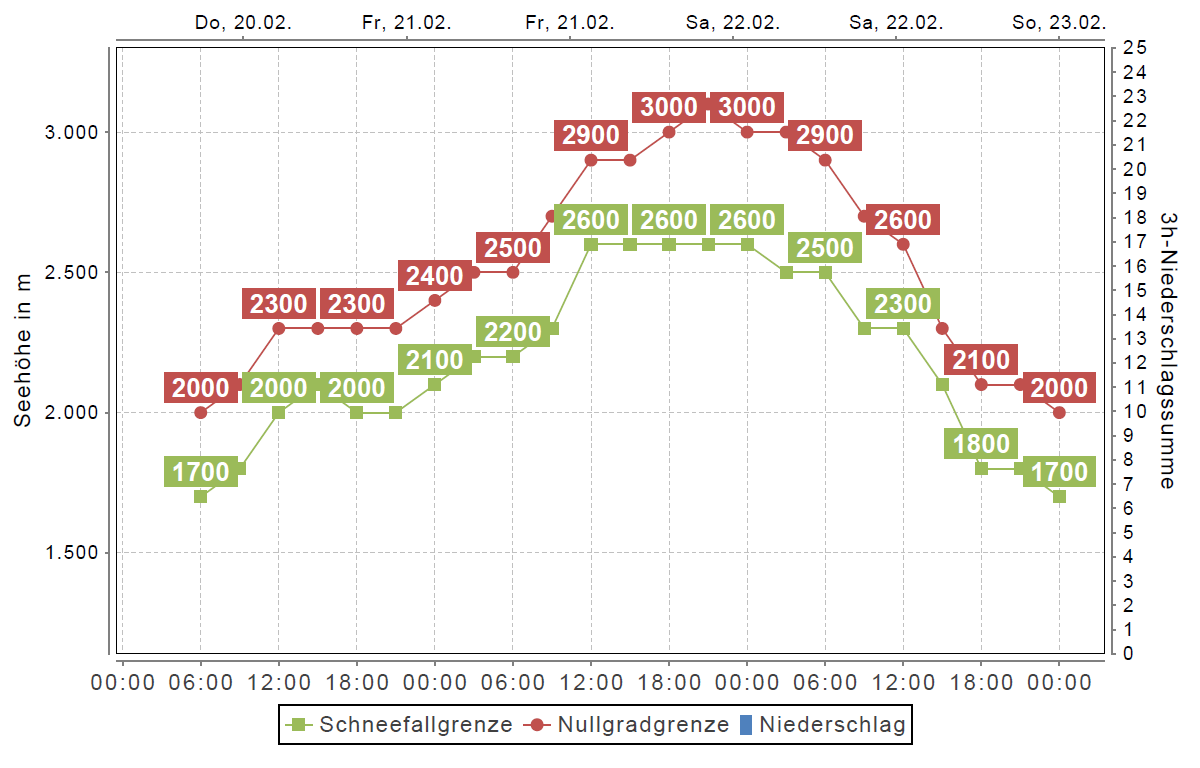
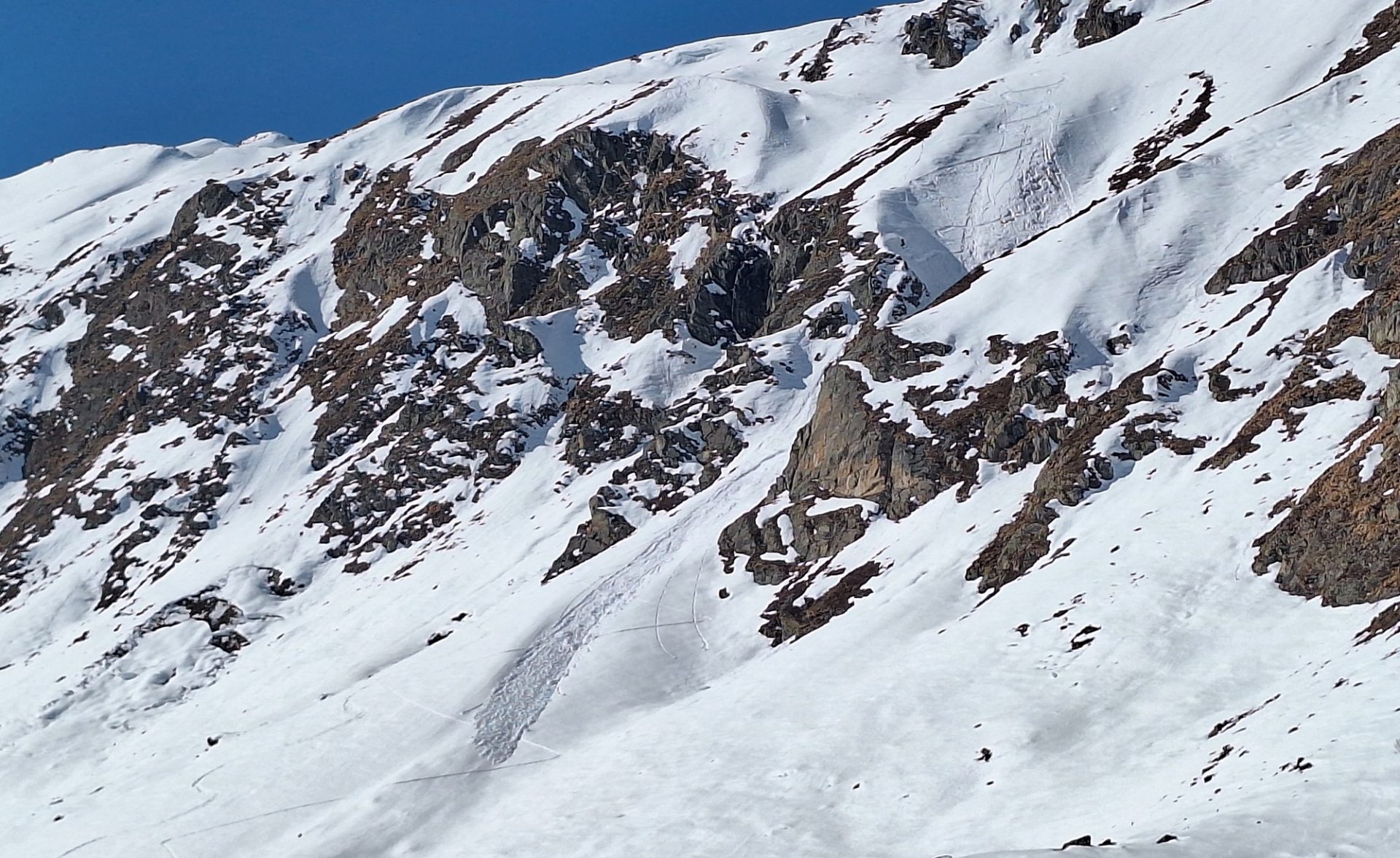
Review: short period of heightened trigger-sensitivity last weekend
The fresh snow at the end of last week fell without much wind impact north of the Main Alpine Ridge, so snow quality on the sunny days which followed was quite good. Lots of winter sports enthusiasts were to be seen in backcountry, enjoying the fine conditions. The fresh snow distant from ridgeline and pass areas was loosely-packed and unbonded, so many very steep descents could be enjoyed.
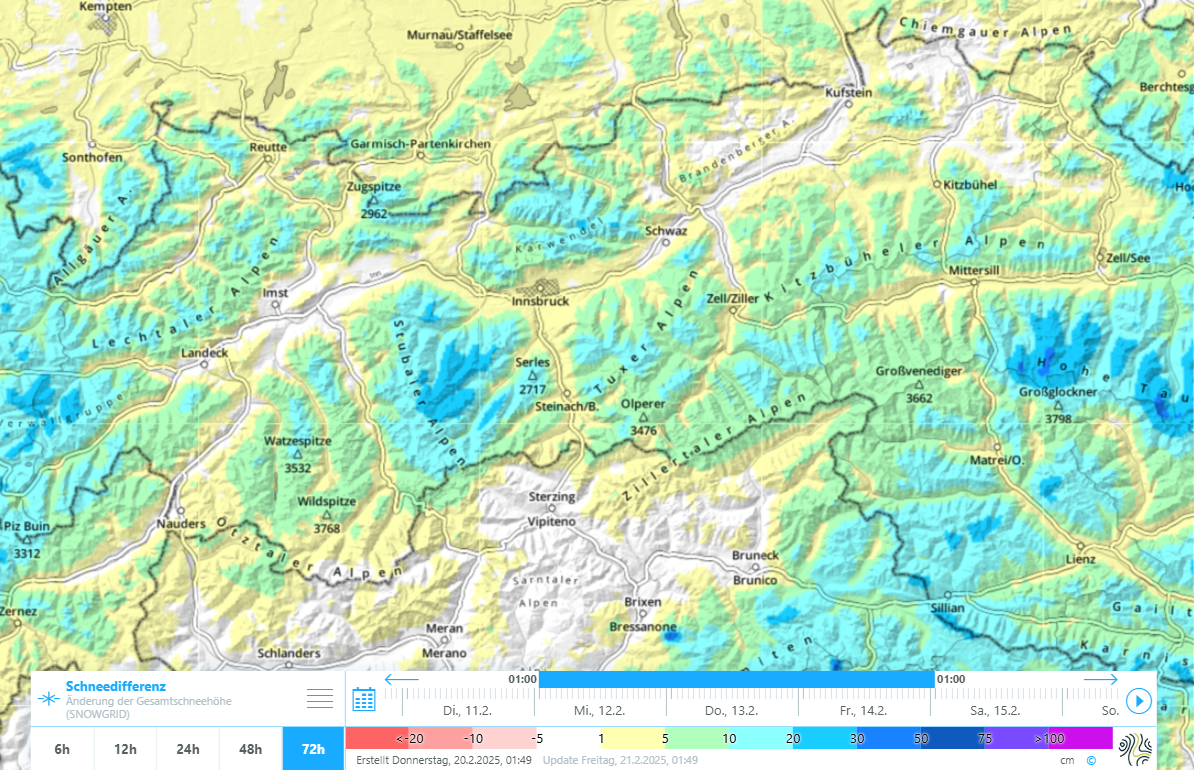
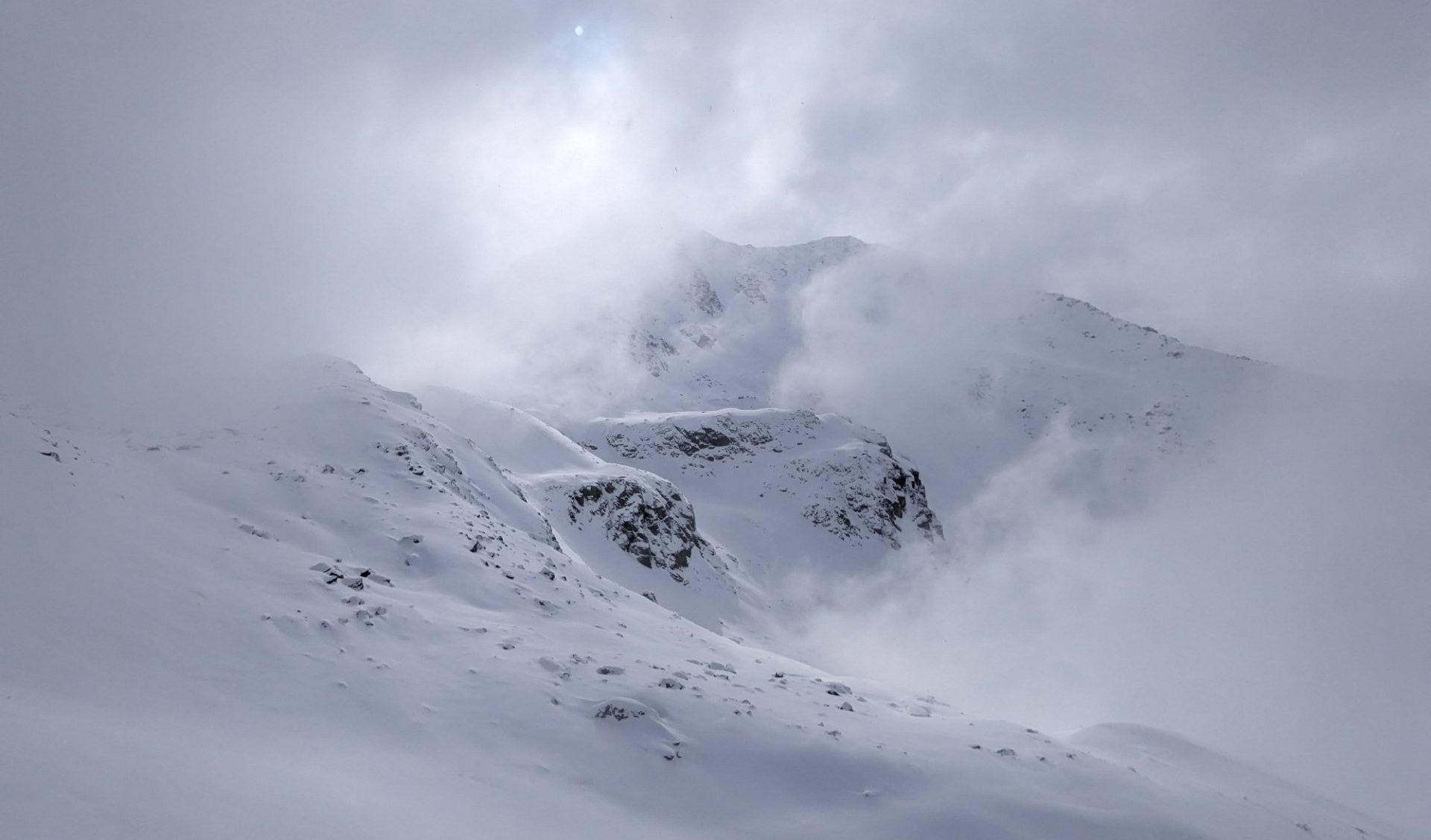
Outside of some small ridgeline snowdrift accumulations that released on Saturday, 15.02, also two medium-sized slab avalanches were triggered by persons in the ground-level old snow in the Stubai Alps. In this case, the burden of the fresh fallen snow was clearly enough to form an adequate slab for a short time. Those involved in the avalanches escaped without injuries.
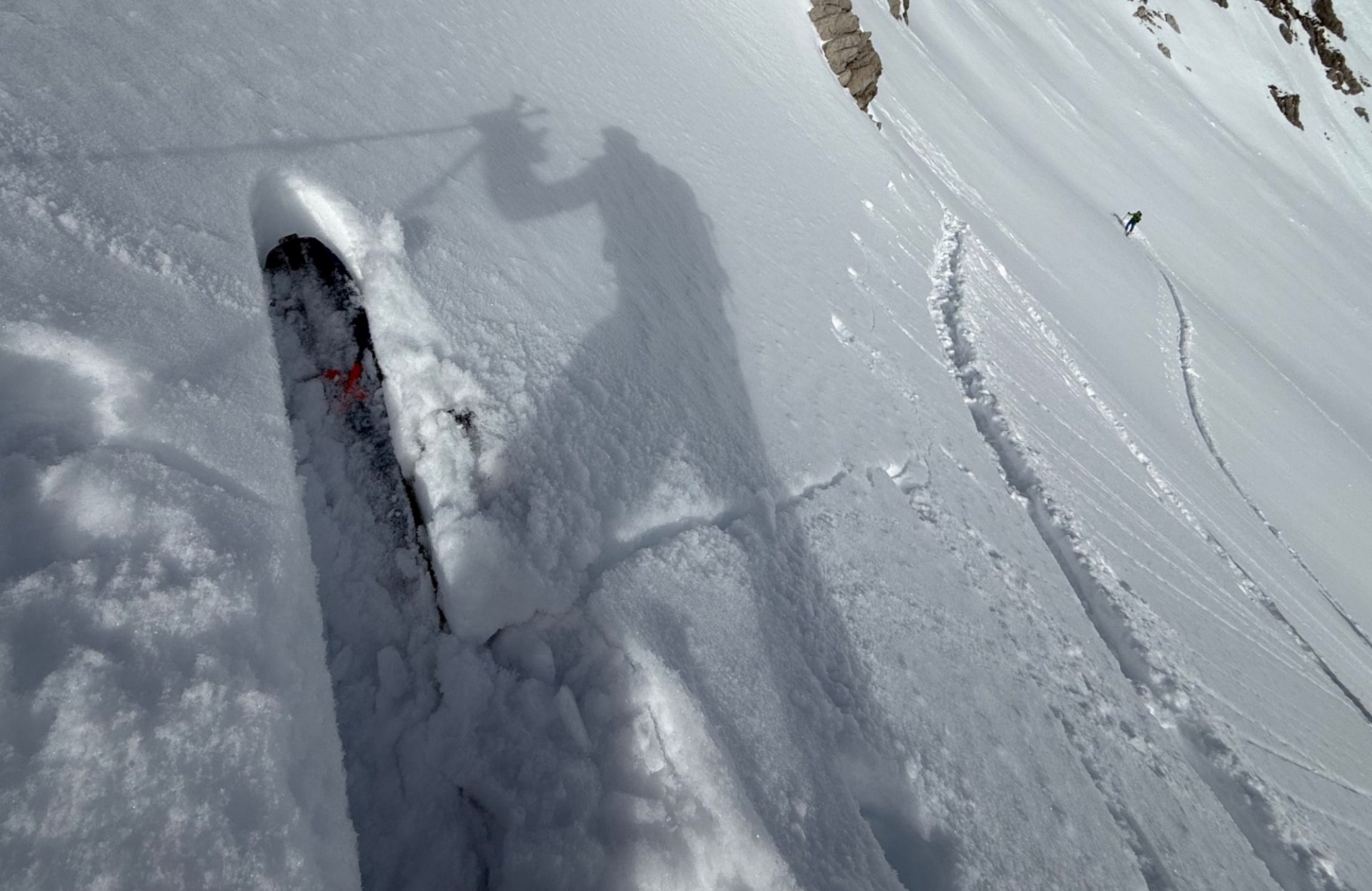
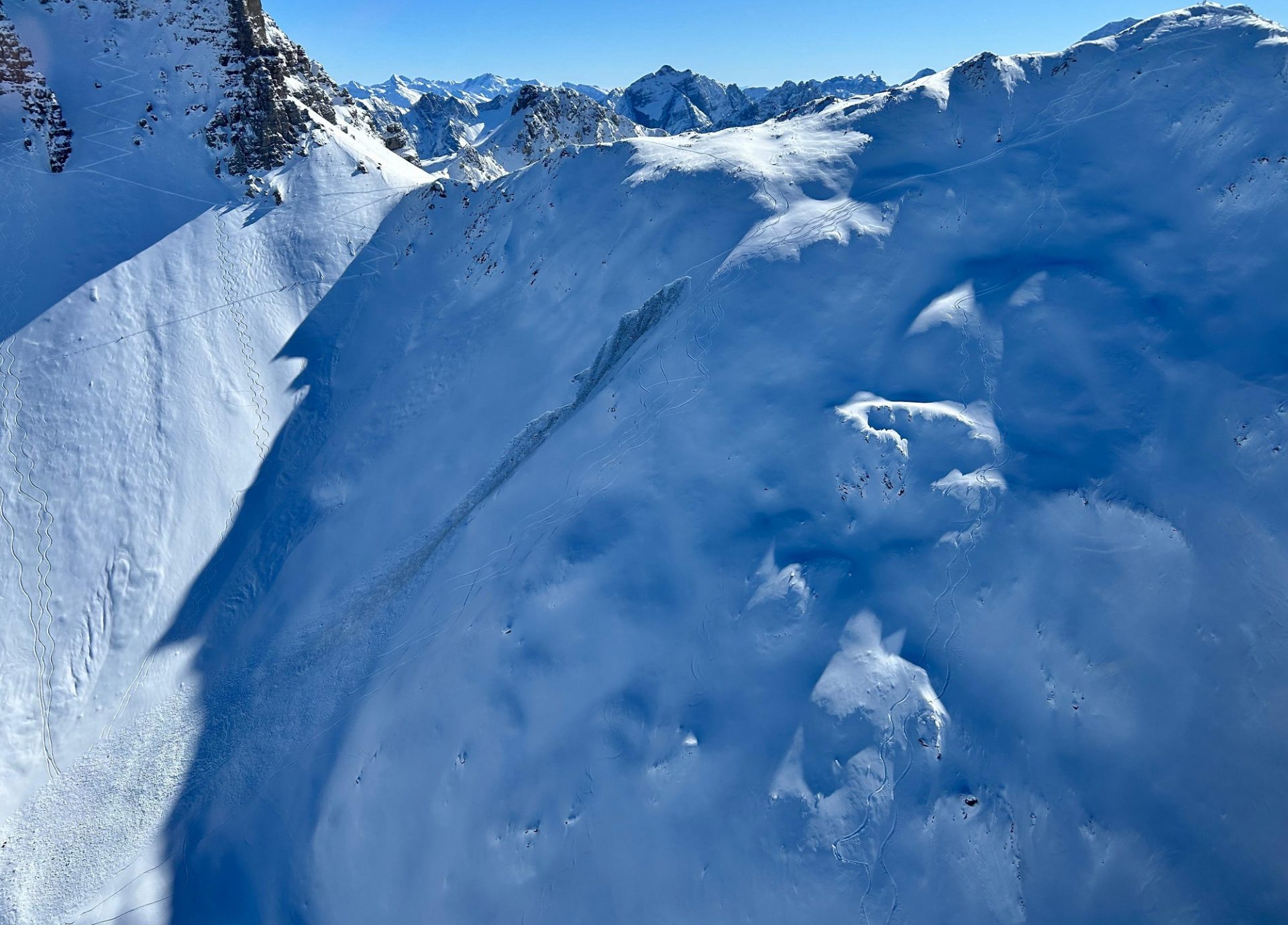
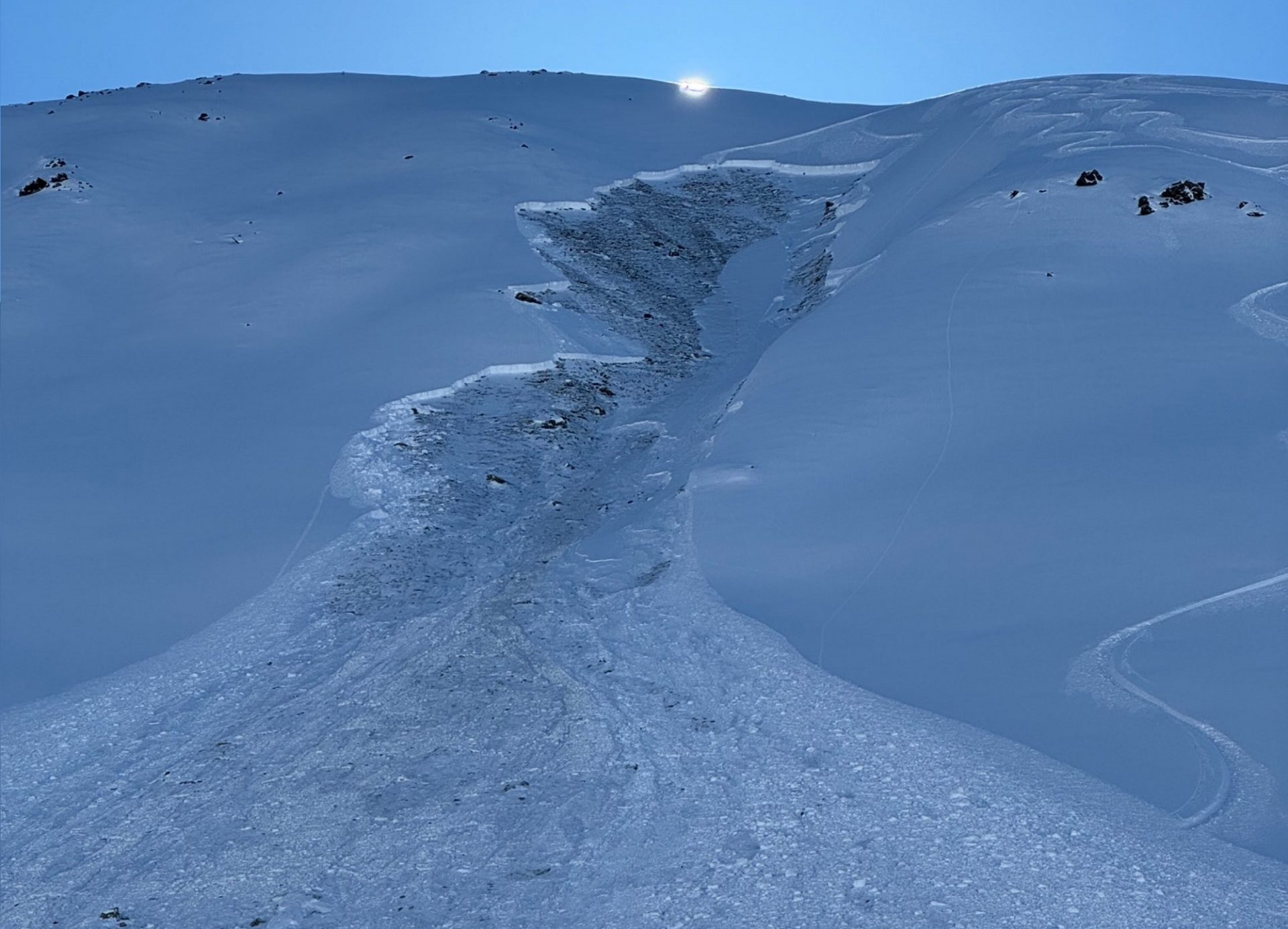
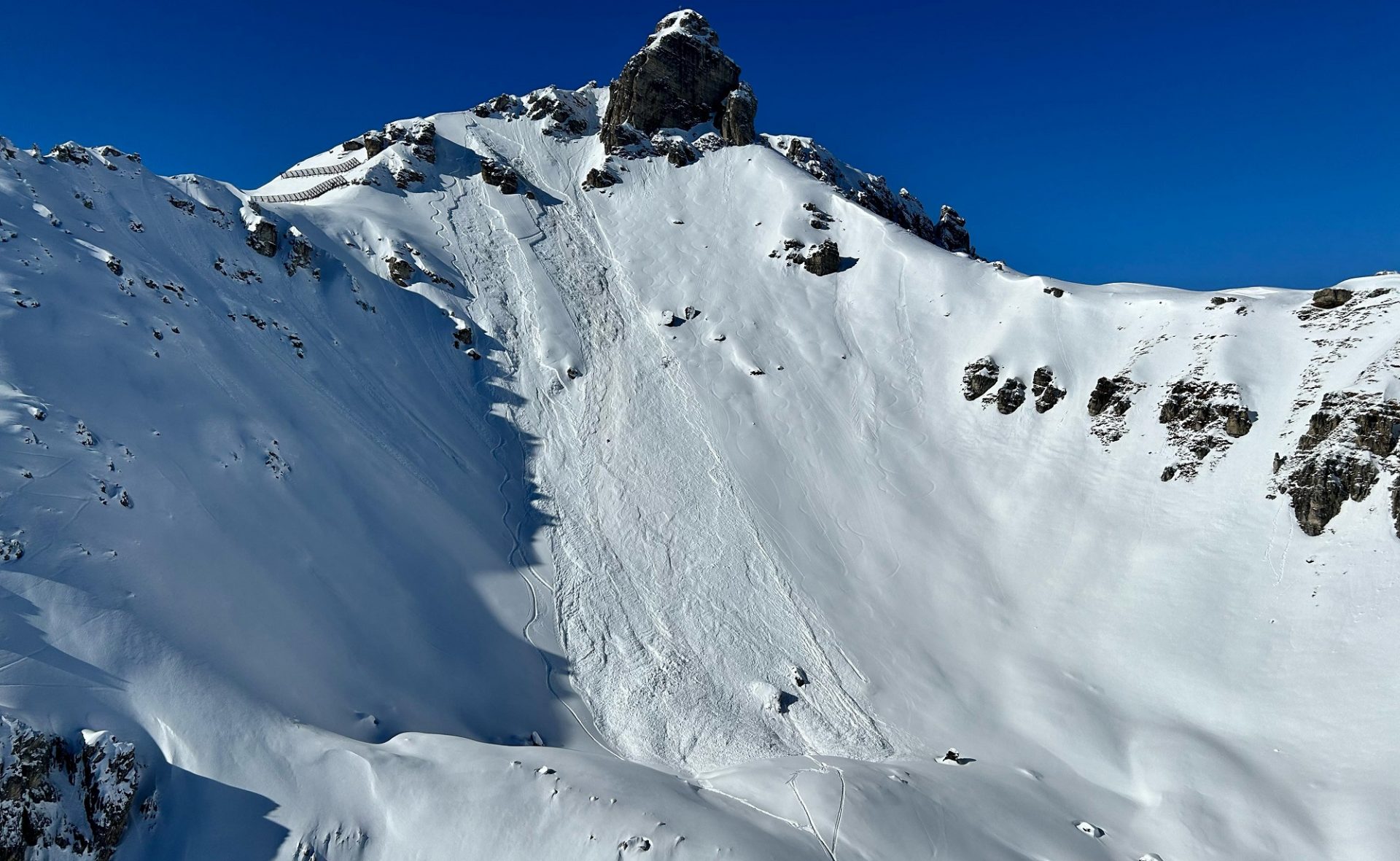
In East Tirol the snowfall was accompanied by often strong-velocity winds. Snowdrift accumulations were generated and deposited on top of the generally shallow, often weak snowpack. Also here on Saturday, a medium-sized slab avalanche was triggered by persons.
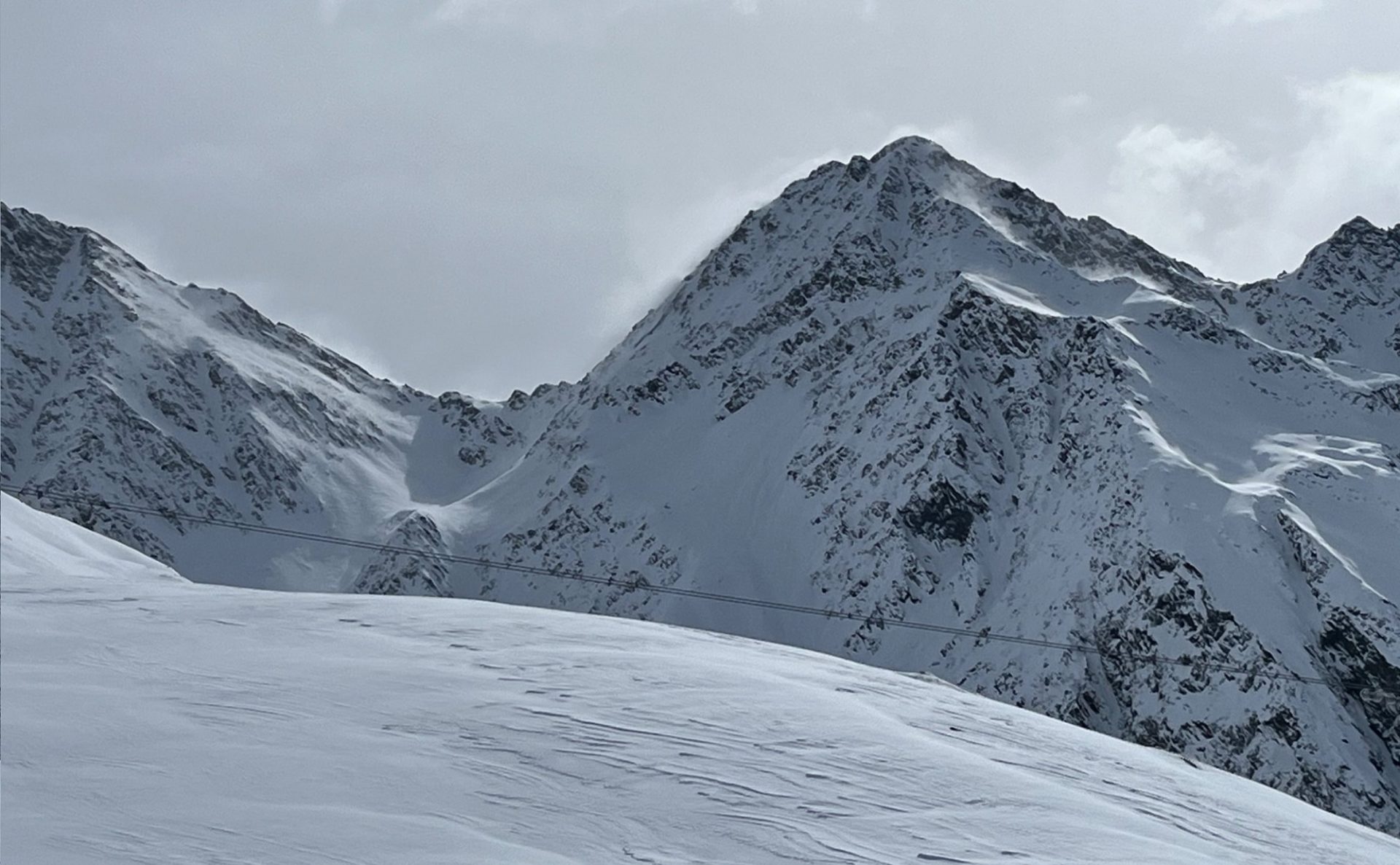
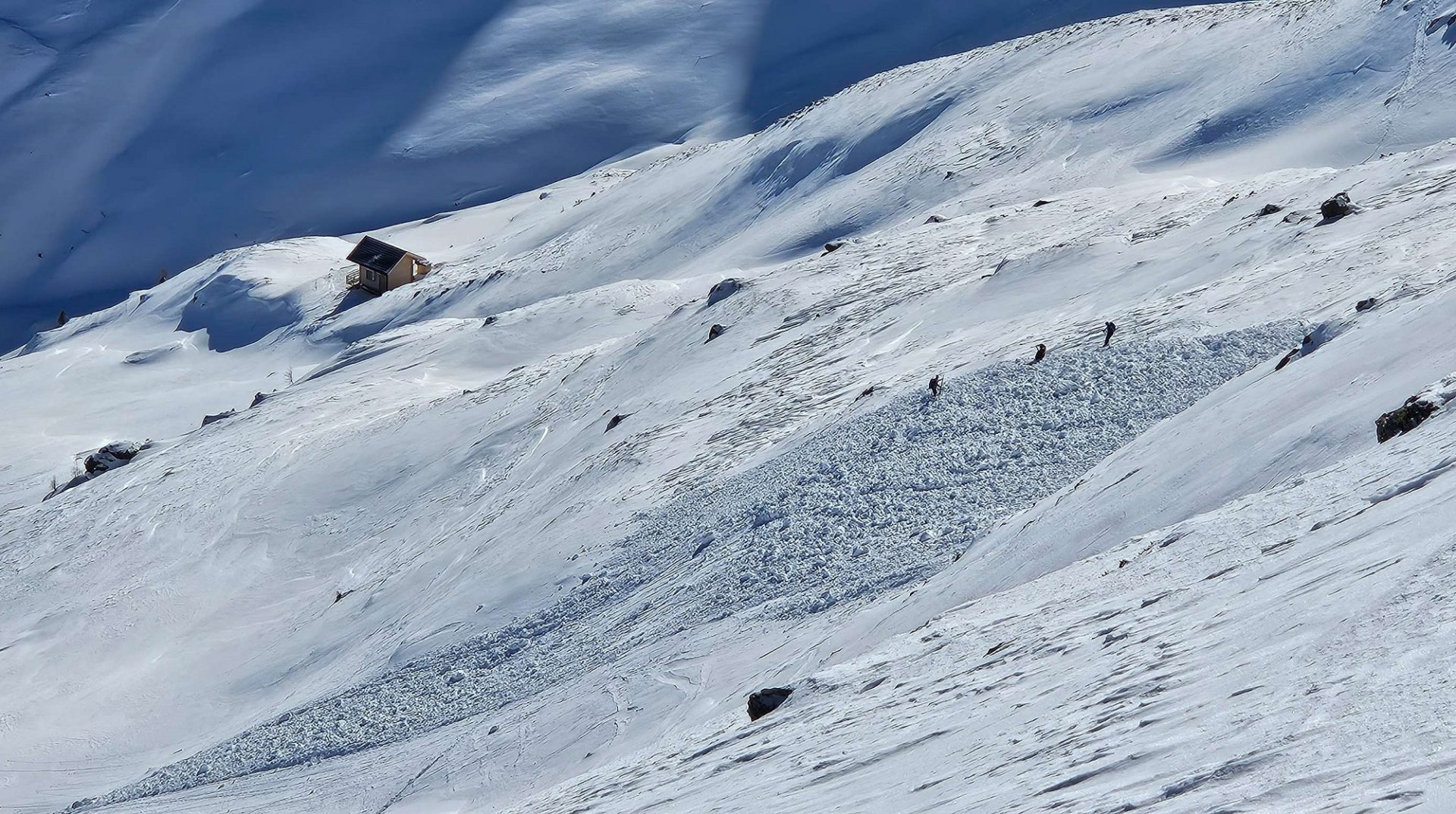
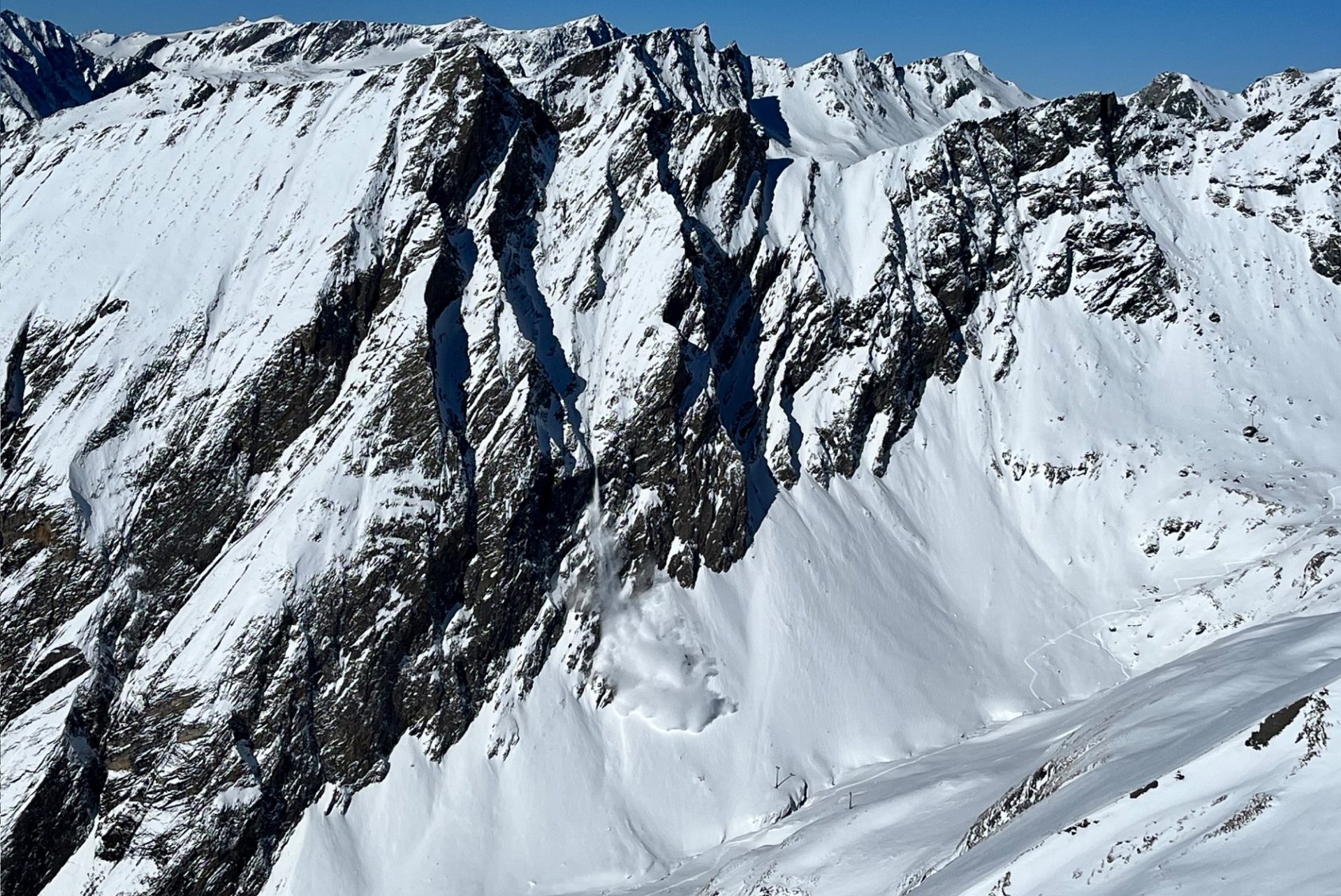
Increasing perturbances starting middle of next week
Next week we expect a mixture of sunshine and clouds, dry weather until Tuesday when some precipitation is anticipated. Thus, the danger of dry-snow avalanches will increase somewhat.
